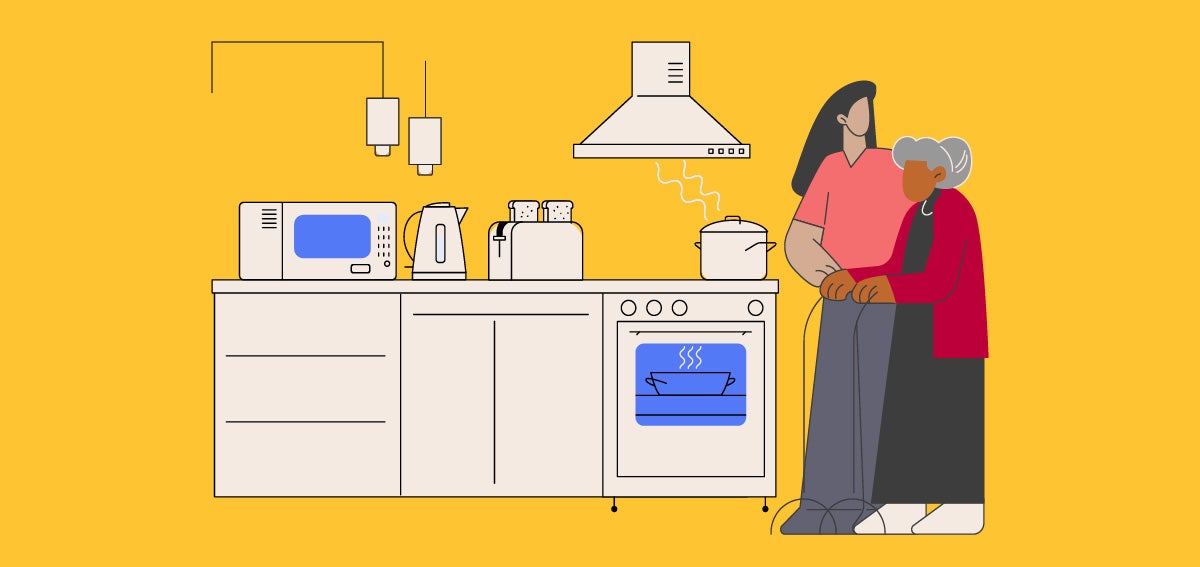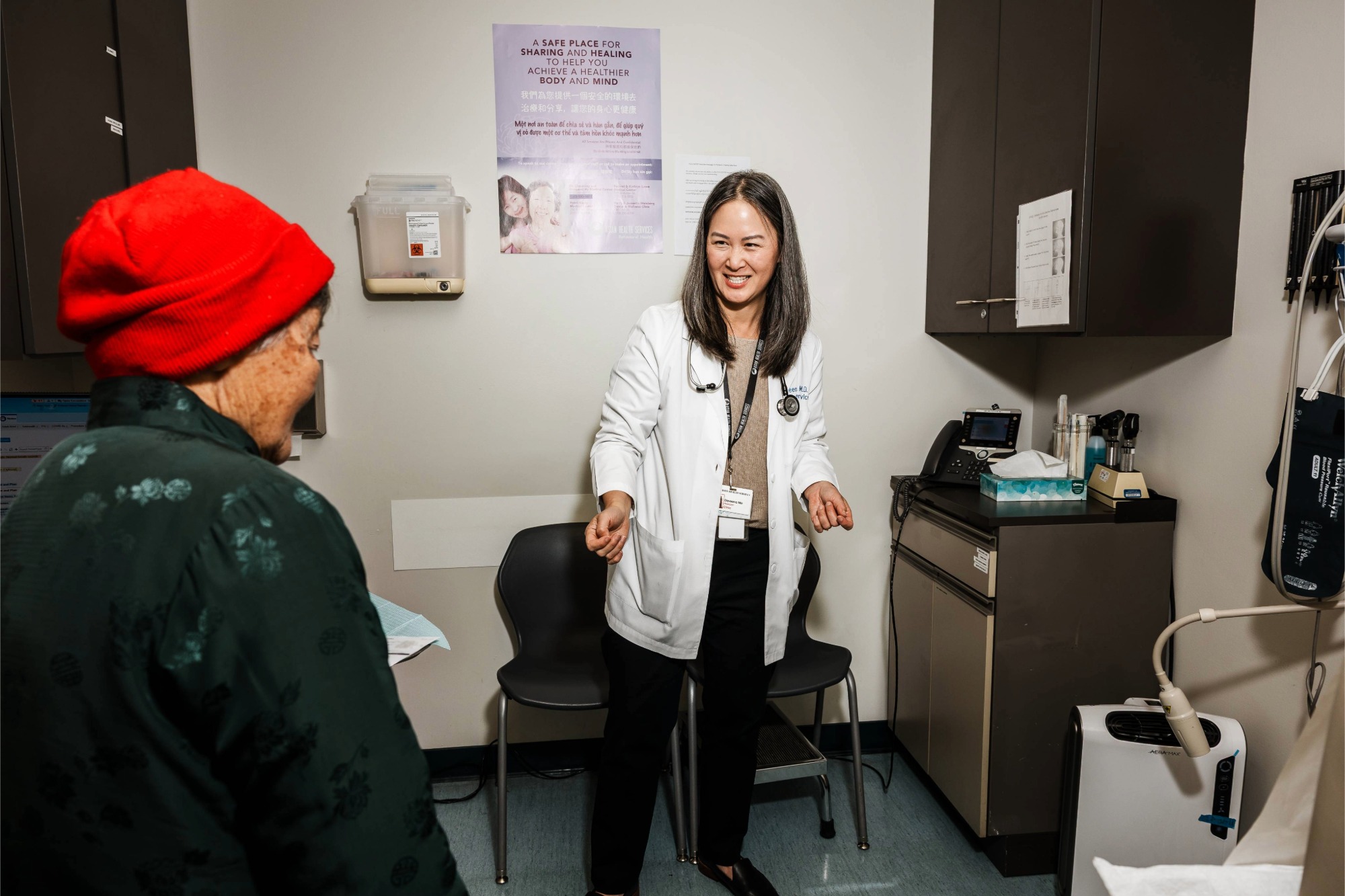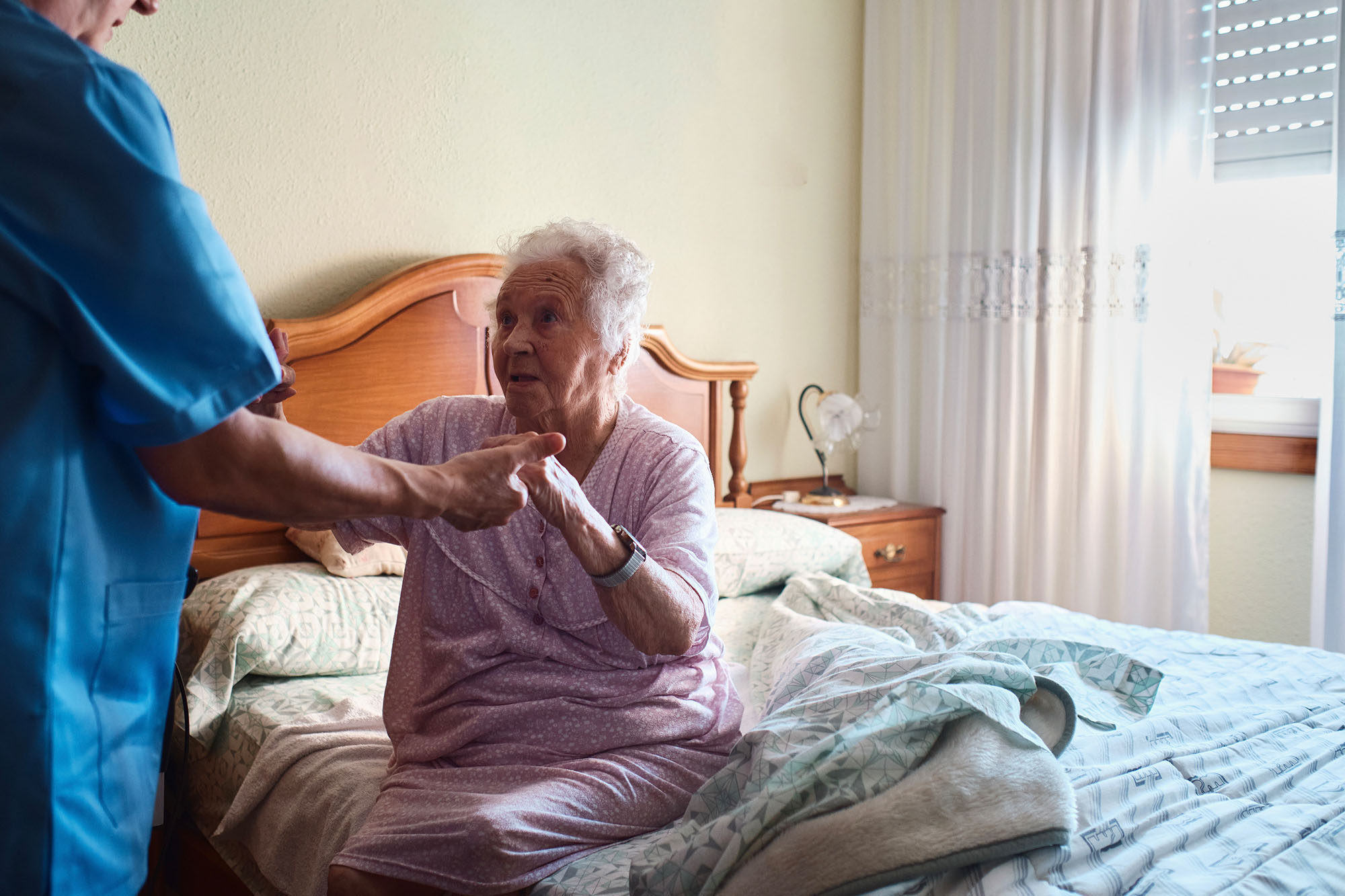California’s population is rapidly aging, and the over-60 population is growing racially and ethnically diverse faster than any other age group. By 2030, it is projected that one in four Californians will be an older adult.
This growth — and the needs of an increasingly diverse aging population — demands that Californians take action to ensure older people get the support they need to live well. Many people want to continue living independently in their homes and communities as they age, and they need high-quality health care and community-based supports to do so.
Why This Work Matters
The impacts of aging eventually affect us all. And yet, the needs of older Californians are often invisible to those not experiencing the challenges of aging themselves or caring for an aging loved one.
Fragmented, uncoordinated systems, as well as insufficient services and a shortage of direct care workers, can make it very difficult for many older adults who want to live independently to do so. Among adults who report needing help with day-to-day personal care or household needs, about 40% say they could use more help or that they have no help at all.
Older Californians with low incomes face particular health and social challenges. Three times as many older Californians with low incomes report fair or poor health status compared to their peers with higher incomes, and older adults are the fastest-growing cohort among Californians experiencing homelessness. Yet many safety-net providers — the experts in coordinating medical, behavioral health, and social needs for people with low incomes — have insufficient geriatric expertise or focus.
Our Approach
Our communities are enriched when they actively enable the full participation of our older family members, friends, and neighbors. CHCF is committed to ensuring that older people with low incomes get the support they need to live well at home and in their communities.
Furthermore, several major state initiatives are underway to improve services and quality of life for older adults. CHCF is leaning into this window of opportunity to support stakeholders working to implement system improvements.
A selection of CHCF’s work to improve the care and supports that older Californians with low incomes need to safely age in place is described below.
Highlights of Our Work
Capacity-Building in the Delivery System
California’s community health centers and public health care systems have long provided integrated care to adults, children, and families with low incomes, but these care settings have not historically emphasized services specifically focused on older people. Recognizing that these organizations are well positioned to provide coordinated, integrated care to older adults, CHCF supported the Strategies for Older Adult Services Task Force and is supporting the Accelerating Readiness for an Aging Population Learning Community.
The task force brought together leaders from six health centers or associations with experience and commitment to serving older adults. The goals of the task force were to advance collective thinking about future older adult service models for health centers, forward-looking and aligned financial/business models, and important state and federal policy opportunities to facilitate an expanded health center role. Through its collaborative work, the task force developed a 10-year vision for the role of health centers caring for older adults and defined a road map that gives stakeholders shared strategies for moving forward.
The learning community, which runs through spring 2025, supports a cohort of seven Federally Qualified Health Centers (FQHCs) and non-FQHC community health centers. The learning community members engage in peer-to-peer learning and build skills to integrate services for older adults into primary care using various clinical and financial approaches. They have planned and are launching a practice change or program aimed at improving care for older adults.
CalAIM Reforms
CalAIM (California Advancing and Innovating Medi-Cal) presents a historic opportunity to transform care for Medi-Cal’s seniors and people with disabilities, and CHCF is supporting learning activities related to CalAIM reforms that impact this population. Some of the reforms CHCF is tracking include:
- Community Supports that managed care plans now have the option to offer to Medi-Cal enrollees to address a variety of social drivers of health. One of these supports expands access to assisted living communities, and a CHCF explainer can help Medi-Cal managed care plans learn more about assisted living facility types, services, residents, and payment pathways in Medi-Cal.
- The “institutional long-term care carve-in,” which went into effect January 1, 2023, and requires that care in nursing homes and other institutional settings be provided as a benefit through Medi-Cal managed care plans statewide.
- The coordination of care for dually eligible Californians via Medicare Medi-Cal Plans.
- Considerations for how various CalAIM initiatives can best address the unique needs of older adults experiencing homelessness, many of whom have disabilities or complex care needs or both.
See the full collection of resources related to CalAIM and older adults.
Home and Community-Based Services
Home and community-based services (HCBS) allow older adults and people with physical and/or cognitive disabilities, serious mental illness, and disabling chronic conditions to live safely and independently, rather than moving to institutional settings such as nursing facilities. CHCF is focused on opportunities to build on and optimize the current Medi-Cal HCBS system. This work addresses the following topics:
- Data. Public data reporting is critical for assessing who is receiving which services and where, as well as for identifying any inequities.
- Quality. As the state aims to improve the HCBS system, it is essential to understand the challenges and opportunities related to measuring, reporting, and monitoring the quality of Medi-Cal HCBS.
- Personal care services. California’s flagship In-Home Supportive Services program provides essential personal care services to hundreds of thousands of Californians. CalAIM Community Supports and other avenues within IHSS provide opportunities to expand agency-mediated personal care for people who have difficulty managing their own care.
- Direct care workforce. Who are California’s direct care workers, what do they do to help people age in place, and why do they matter?
Equity Issues Among Older Adults
Older adults experience unique equity issues driven by the intersection of age, race and ethnicity, gender, disability, socioeconomic status, and more. CHCF is working with philanthropy, advocacy, and research partners to advance health equity for older adults, with an emphasis on communities of color.
Justice in Aging produced a series of issue briefs focused on helping state agencies, policymakers, and other stakeholders support equitable HCBS where possible and desirable rather than institutional care. The UCLA Center for Health Policy Research published a brief and two fact sheets about the health and well-being of adults with a disability or chronic conditions who also have needs for long-term services and supports.
The SCAN Foundation, in collaboration with CHCF and the Metta Fund, is supporting four Equity Community Organizing (ECO) Groups comprising older adults from impacted communities and local stakeholders representing diverse perspectives to identify and prioritize the key drivers of the health inequities that older adults experience. Over 18 months, the ECO Groups are working on codesigning solutions that address these inequities.
Also, CHCF funded research to understand the health care experiences of older Black Californians (using data from the Listening to Black Californians study). Read the three fact sheets:
Why and How Older Black Californians Take Control of their Health
How Aging Women Face the “Triple Jeopardy” of Race, Gender, and Age in Health Care
Listening to Aging Black Californians: Changing the Culture of Health Care One Person at a Time
Learn More
For more information, please contact Kate Meyers.






